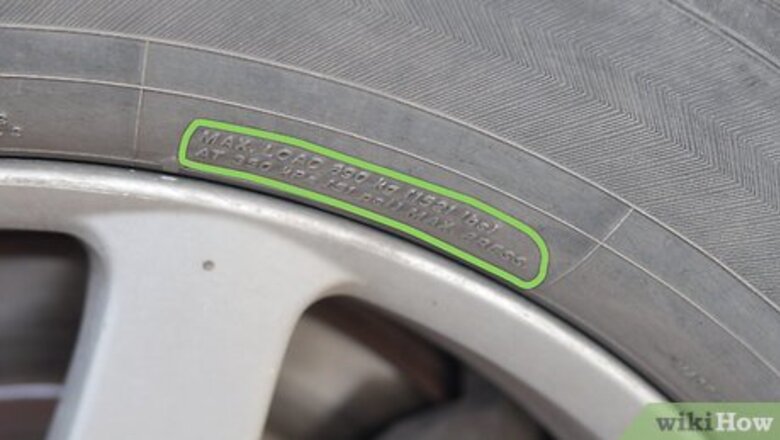
views
Check Your Pressure

Find the recommended pressure. You can find this in the owner's manual, on a sticker inside the driver-side door jamb, or in the glove compartment. It may be the same for all four tires, or the front and rear tires may be different—it differs by model. Normally, it will be in the range of 28 to 36 psi (pounds per square inch) or 195 to 250 kPa (kilopascals). You can also find the maximum tire pressure on the tires themselves, but use this only if you can't find the vehicle's recommended numbers. "Maximum" doesn't necessarily translate to "best." A good rule of thumb is to set the tires to 32 psi. Then find the proper pressure and correct as needed.
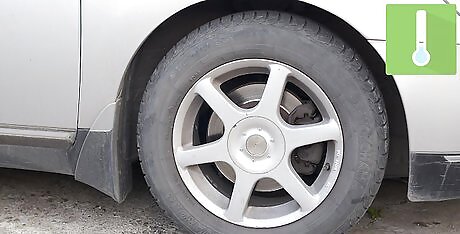
Check the tires when cool. Warm air expands, and will give you a false reading of greater pressure.

Remove the screw-on cap from the valve. This is the little black or silver stem poking out from your wheel. Remove the cap, and put it where you won't lose it. There are two kinds of valve stems: rubber valve stems and metal valve stems that are on wheels equipped with TPMS (tire pressure monitoring systems).
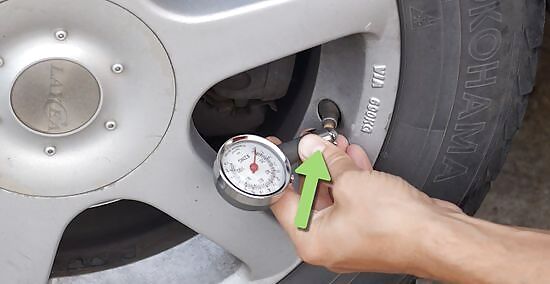
Attach the gauge. Place the plug end of the gauge squarely onto the valve stem, and press down firmly. It may hear the hissing of air escaping; if so, press harder until the hissing stops. Read the gauge as directed to determine the pressure. If the tire pressure matches the recommended number, replace the cap and move to the next tire. Repeat this process for all four tires, plus the spare. Should you run flat, it's not going to be helpful to have a flat spare!
Add Air to Your Tire
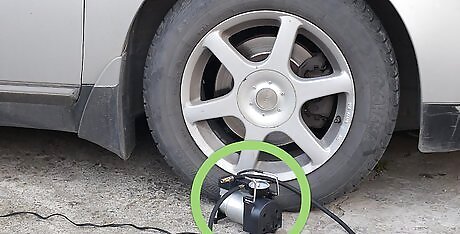
Find air. If you need to add air to your tires, and don't have a compressor laying about the house—most people don't—head for your nearest gas station. Make sure you bring a couple dollars worth of quarters with you, as a few minutes of compressed air can cost $1.00USD or more. A handy device to have around the garage is a portable tire inflator that it plugs into the 12v power socket in your car. It is available wherever tire pressure gauges are sold.
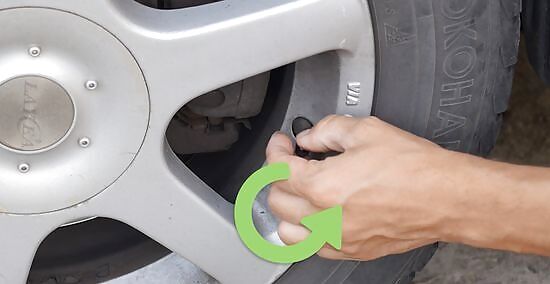
Remove the valve cap. This is the same cap and valve you used to check the pressure.
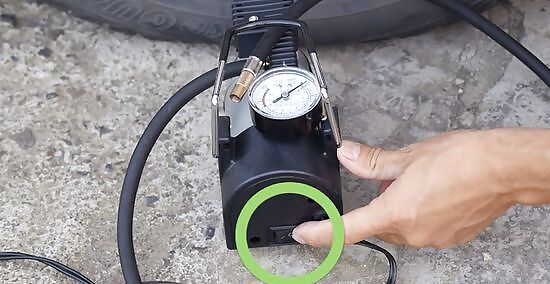
Turn on the compressor. This may be by a switch, if using a home compressor, or by plugging the machine with quarters, for a service station compressor. It'll start hissing.
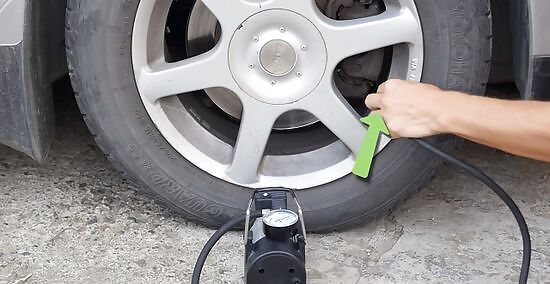
Place the hose nozzle squarely onto the valve stem. Press down firmly, just like you did with the pressure gauge, and squeeze the valve trigger. If it hisses loudly, press more firmly until the hissing stops or is minimized. How much lower than normal your pressure was will determine how long you want to keep the compressor filling the tire. Most tire compressors have a sliding gauge coming out of the top that pops up when you release the valve trigger. Don't rely on it for total accuracy, but as a general guideline to see if you're getting close to your desired psi. When close, use your own tire pressure gauge to check, and either add more air in short 5-second bursts, or use the gauge to press the pin inside the valve stem and let air out, if you've over-filled the tire.
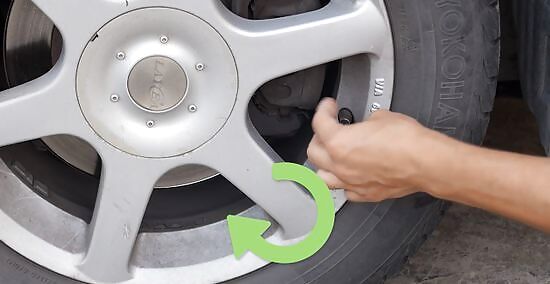
Replace the cap. When each tire has been inflated to the proper pressure, replace the cap, and repeat for all 4 tires plus the spare. If you had to drive more than a couple miles to the service station, your tires will warm up, and the air pressure will increase as a result. If your readings indicate that you need add, for example, 10psi to the tire, then add 10psi, no matter what the current reading says. Check a few hours later, after the tires have cooled down, to verify the correct inflation.
For Bicyclists

Buy a bicycle tire pressure gauge. Automobile tire pressure gauges will not accurately reflect the much higher psi levels of bicycle tires.
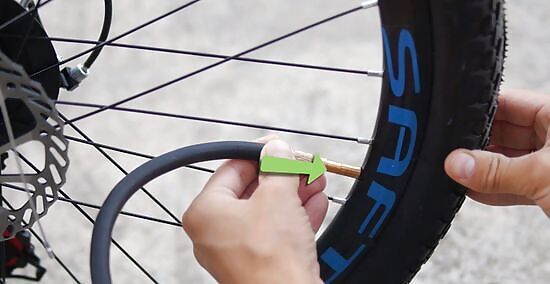
Use a hand pump. Follow the other steps outlined, including checking the pressure when the tire's cold, and following the bicycle manual's guidelines. You can use an air compressor to fill bicycle tires. Make sure you pay close attention to what you are doing. Fill the tire in short bursts and check the pressure often until you reach the desired pressure.
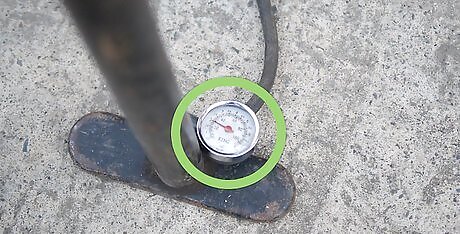
Check your pressure before every ride. Because of their size and dimensions, bicycle tires react more quickly to changes in ambient air temperature, and psi will drop in cooler weather. For every 10° drop in temperature, tire pressure will drop about 2%. For example, if you head out during the day riding on 100psi and the temp is 90, when you head home that night, and it's now 60°, your tire pressure will be about 94 psi—enough change to be a noticeable difference.
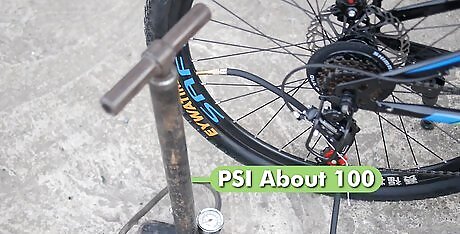
Don't over-inflate. A tire that rolls great at 100 psi on a smooth road will deliver a harder ride on rough road. To help with traction on wet days, drop your psi by about 10.















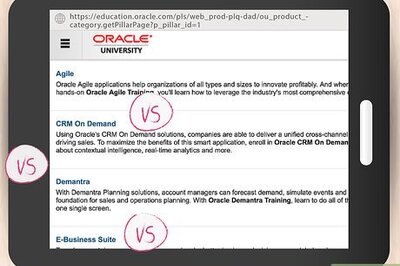



Comments
0 comment